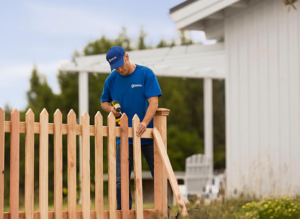Plumbers install, repair, and maintain pipes that carry water and waste to and from homes and businesses. They also read blueprints and drawings, weld, cut, shape, and assemble piping parts. They also service commercial cooling and heating systems.
They often work with construction teams and architects to integrate plumbing into building projects properly. Other responsibilities include training apprentices and providing customer service. Contact Hubbard Mechanical now!

Plumbers work with pipes and fixtures, facilitating water, gas, and waste disposal in residential, commercial, and industrial buildings. They install, repair, and maintain these systems to ensure occupants have access to clean water and adequate sanitation.
A career as a plumber is challenging but rewarding for individuals who enjoy working with their hands and solving problems. The work can be dangerous and physically demanding, as plumbers frequently lift heavy objects and may have to enter cramped spaces. It is also important for plumbers to follow safety protocols and procedures when performing their duties.
Many plumbing professionals start their careers as apprentices. After completing an apprenticeship program, they can seek employment with larger plumbing contractors or companies. Experienced plumbers can earn higher wages and have more opportunities for advancement. Plumbers can also choose to become self-employed, which offers greater flexibility in scheduling and choice of projects.
Plumbing work can be stressful as it requires long hours and on-call status. Emergency calls can require plumbers to work evenings and weekends. In addition, the job can be hazardous as plumbers work with chemicals, sewage, and high-pressure systems. The physical nature of the work can also lead to back and neck injuries.
Plumbers often work with tools such as wrenches, pipe cutters, soldering equipment, and power tools. They also use a variety of diagnostic tools to identify and repair plumbing problems. They typically work indoors but may have to go outside, into confined spaces, or up on ladders. Plumbers must wear appropriate clothing and safety gear when entering these areas. The work environment can be noisy and messy, and prolonged exposure to dust and other pollutants may cause respiratory problems. The heavy lifting and constant movement required in this profession can also contribute to back and knee injuries. Despite the challenges, plumbers find the work rewarding as they help improve the lives of their customers. In addition, many plumbers enjoy the opportunity to learn new skills and expand their knowledge of plumbing technologies and techniques. Some even go on to become supervisors or owners of their own plumbing businesses.
Education and Training Requirements
A person who wants to become a plumber must go through three major steps in order to obtain the training needed for the job. This includes completing a formal training program, getting a journeyman plumber license and gaining master plumber status.
Formal training programs are available at various colleges and technical schools in New York. Many of these offer a combination of classroom instruction and hands-on work experience. The classes typically include OSHA safety training, detailed instructions on how to read and understand blueprints and drafting, in-depth exploration of state plumbing codes, and advanced training in topics like water treatment systems and pipe fittings.
Another option for aspiring plumbers is to enroll in a formal apprenticeship program. These programs are often run by trade unions and organizations and provide on-the-job training under the guidance of experienced plumbers. Apprentices can gain the necessary skills and knowledge to begin working independently after a few years of training.
There are also a number of non-formal training programs for aspiring plumbers in New York. Some community college and trade school programs offer courses in basic plumbing theory and practice, while others offer more advanced courses on topics such as backflow prevention device testing, green plumbing practices, and the latest plumbing technologies. Some manufacturers also offer training for their products, which can be helpful for plumbers who are interested in specializing in particular systems or types of equipment.
In addition to educational and training requirements, most states require plumbers to obtain a plumbing license before they can begin working. Licensing requirements vary from state to state, but generally involve a background check, on-the-job training under a licensed journey plumber, and passing a written and practical exam. Some cities or counties also require plumbers to attend continuing education courses or renew their license on a regular basis.
In New York, a plumber must be at least 18 years old and have a high school diploma or GED equivalent in order to qualify for a plumbing license. The state also requires plumbers to pass a background check and demonstrate good moral character. People who want to become plumbers must also be physically fit for the job, as it can sometimes involve heavy lifting and extended periods of time standing or walking.
Skills and Knowledge Requirements
Plumbers must have a wide range of skills and knowledge to do their jobs well. This includes technical skills such as soldering and pipe cutting, but also plumbing theory, building codes, and safety regulations. They need to know how to read and interpret blueprints, understand a variety of tools and equipment, and have experience with various types of pipes, including PVC, CPVC, cast iron, and copper. Plumbers also need to have good customer service skills, since they frequently interact with customers and must explain complex issues in layman’s terms. Plumbers who are irritable or unresponsive to customer concerns won’t get repeat business.
In addition to these technical skills, plumbers must have a strong work ethic and be reliable. They often work in confined spaces and are required to lift heavy objects, so they should be physically fit. They must be able to maneuver their bodies in tight corners and through small openings, as well as climb stairs and ladders when working on roofs or in crawl spaces.
As they advance in their careers, some plumbers choose to specialize in specific areas of plumbing. In order to do this, they must complete additional education and training. Other plumbers choose to open their own plumbing businesses, which requires strong business management skills in addition to their plumbing expertise. Plumbers who run their own companies must be able to schedule jobs, meet deadlines, and prioritize tasks. They must also be comfortable with budgeting and calculating costs.
For those interested in becoming a master plumber, they must complete more advanced training and earn a license. This process typically involves completing an apprenticeship and passing an exam. Some people also choose to take classes at a trade school or community college, which can be helpful in developing the necessary skills for this career path.
Some plumbing jobs require specialized equipment or materials, so it’s important for plumbers to keep up with technological advancements in the industry. For example, new pipes are being made from more environmentally friendly materials than older versions. Plumbers who want to stay ahead of the curve should consider taking courses in sustainable plumbing.
Work Conditions
Plumbing is a trade that offers good job stability and financial security for those who are skilled and work hard. It can also be a rewarding career for those who enjoy hands-on problem-solving and working with their hands.
Plumbers are typically employed by construction companies, plumbing contractors, and maintenance departments of commercial and industrial buildings. They may also choose to be self-employed and run their own plumbing businesses. Plumbers are usually required to have a high school diploma or equivalent and complete technical training through an apprenticeship. They are then required to pass an exam and earn a license. Some Plumbers pursue additional education and certification in specialized areas like gas fitting or welding.
The work conditions of plumbers can vary greatly depending on the type of work they do and where they are located. For example, plumbers that focus on residential services will work directly in homes and apartments, which can often involve working in cramped spaces and navigating around furniture and appliances. They can also be required to interact with homeowners or tenants and explain their plumbing problems and repair options.
Commercial plumbers are involved in a different type of work than residential ones, as they focus on the plumbing systems in office buildings, retail stores, restaurants and other types of commercial and public buildings. These larger-scale plumbing systems are typically more complex and require a higher level of knowledge of building codes and regulations. Commercial plumbers can also be required to handle work on large plumbing equipment, such as water heaters and fire sprinkler systems.
Due to the varied nature of their jobs, plumbers can be exposed to a variety of environmental hazards. These can include exposure to chemicals, sewage and other hazardous materials. It is important for plumbers to follow safety procedures and use the proper tools when working with these materials. Plumbers should also take care to keep their work areas clean and organized to prevent accidents and injuries. If they are required to work with dangerous substances, they should be trained in WHMIS and have access to the relevant safety data sheets.

